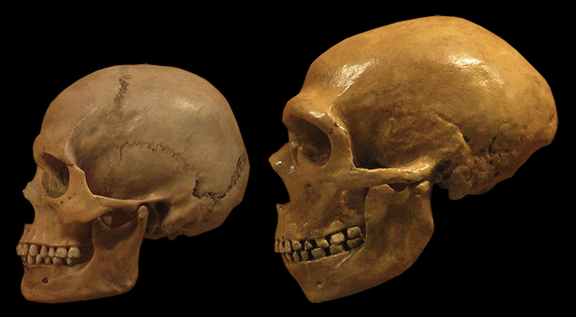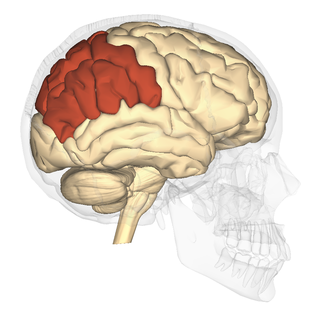Memory
Modern Brain Shape Linked to Parietal Lobes and Cerebellum
Bulging of the cerebellum and parietal lobes made our brains more globe-shaped.
Posted February 7, 2018

The modern globular shape of our human brains evolved gradually and is marked by a bulging of both parietal lobes and the cerebellum (Latin for “little brain”), according to a new analysis of Homo sapiens fossils by paleoanthropologists from the Max Planck Institute for Evolutionary Anthropology in Leipzig, Germany. Their latest paper, “The Evolution of Modern Human Brain Shape,” was published January 24, 2018, in the journal Science Advances.
As the illustrations above and the images below show, modern human brains are much more globe-shaped than our evolutionarily extinct Neanderthal relatives, who had a more elongated skull. The globularity of modern man's endocranial cast is directly correlated with both hemispheres of the cerebrum (Latin for “brain”) and both hemispheres of the cerebellum—which make up the entire cranial globe—becoming more like a spherical volleyball and less like an oval-shaped rugby ball.

The latest findings by Neubauer et al. corroborate other state-of-the-art research which has identified specific genetic changes related to evolutionary brain development since the population split between Neanderthals and Homo sapiens. The Max Planck researchers estimate that our modern brain shape evolved gradually within the Homo sapiens' lineage and reached present-day globularity roughly 100,000 to 35,000 years ago.
Bulging of the Cerebellum and Parietal Lobes in Early Human Life Drives Globularization of the Entire Brain

The main takeaway of this paper is that bulging of the cerebellum and the parietal lobes are key to the development globularization of our modern, present-day brain.

As the authors explain: "Two features of this process stand out: parietal and cerebellar bulging. Parietal areas are involved in orientation, attention, perception of stimuli, sensorimotor transformations underlying planning, visuospatial integration, imagery, self-awareness, working and long-term memory, numerical processing, and tool use. Furthermore, parietal bulging in present-day humans has been linked to large shape variation in the precuneus. The precuneus is a central node of the default-mode network (DMN) and an important hub of brain organization. Bruner et al. therefore concluded that precuneus expansion in Homo sapiens is related to cognitive specializations."
Regarding cerebellar development and function, the authors write: "The cerebellum is associated not only with motor-related functions like the coordination of movements and balance but also with spatial processing, working memory, language, social cognition, and affective processing. The developmental and evolutionary shape changes of the posterior cranial fossa are linked to the rapid cerebellar expansion during perinatal brain growth. Clinical neuroimaging data from modern humans show that in the first three months of life, the cerebellum grows at the highest rate of all brain parts (more than doubling in 90 days). The cerebellum is frequently implied in childhood-onset disorders and known to be vulnerable to environmental influences during early childhood."
Although it remains a mystery exactly how and when our globe-shaped brains evolved, the characteristics of globularity seem to develop during a prenatal and early postnatal period of rapid brain growth. In a statement, co-author Philipp Gunz said: "The evolution of endocranial shape within Homo sapiens suggests evolutionary changes of early brain development — a critical period for neural wiring and cognitive development."
Because of this, the researchers speculate that evolutionary changes to early brain development were directly linked to the evolution of human cognition. Jean-Jacques Hublin, co-author and director of the Department of Human Evolution at the Max Planck Institute in Leipzig, said: "The gradual evolution of modern human brain shape seems to parallel the gradual emergence of behavioral modernity as seen from the archaeological record."
The latest study by Simon Neubauer and colleagues suggests that the bulging of the parietal lobes and the cerebellum gave our modern brain its globular shape. These findings add to a growing body of evidence that puts the structure and functional connectivity of both cerebral hemispheres and both cerebellar hemispheres in the spotlight.
References
Simon Neubauer, Jean-Jacques Hublin, Philipp Gunz. “The Evolution of Modern Human Brain Shape.” Science Advances (First Published: January 24, 2018) DOI: 10.1126/sciadv.aao5961


